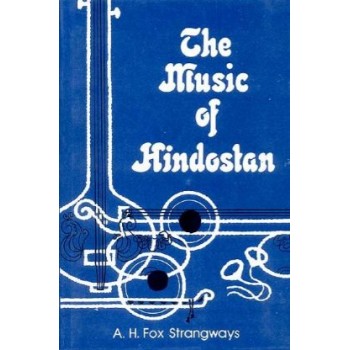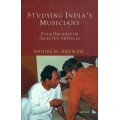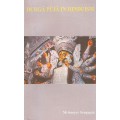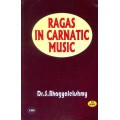The Music of Hindustan
| Price: | Rs.550.00 |
Detail Of The Music of Hindustan
| ISBN | 8121506433 |
| Pages | 374 |
| Language: | English |
| Size(in cm): | 8.8" X 5.8" cm |
| Weight(in grams): | 675(approx) |
Description:
CONTENTS
INTRODUCTION
The understanding of music as affected by national characteristics 1, 2
By an antiquated system 3
by the absence of harmony 4, 5
By difference of content 6, 7
Causes of the particular form taken by Indian music due to the conservatism of India 7
to its size 8
to its climate 9, 10
A concert 11-13
The future of Indian music 14-16
Chapter I
A Musical Diary
Conditions under which these songs were collected and caution with which they should be received 17, 18
Chanties and labour songs 19-21
Occupation songs 20-27
Nagpur, Central Provinces 29-31
West coast 32-8
Travancore 39-45
Maratha bards 46, 47
Conclusion 48, 49
Chapter II
A Musical Diary (continued)
Garhwalis 50-6
Gurkhas 57,58
Panjabis, Cuttack dance 59
Bhavnagar 60, 61
Lullabies 62-7
Children's songs 68
Conclusions 69-72
Chapter III
Legend, History, and the Present Day
Absence of the historical sense 73, 74
Legend 75-82
History 83-5
The present day 86-90
Subbanna and Seshanna of Mysore 86
Ramachandra of Trivandrum 88, 89
Sourendro Banerji of Calcutta 88
Chandra Prabhu of Bhavanagar 90
Rabindranath Tagore 92-9
Chapter IV
The Scale
The facts of folk-song and folk-instruments 100-4
List of Sanskrit authorities 105
Technical terms 106-8
The gramas, 109-12
Bharata 113
Date of his system 114
His twenty-two srutis 115-18
South India 119, 120
Transilient scales 122-6
The sruti in practical music 127-9
And in European music 130-3
Chapter V
Mode
Scale and mode 134-6
Indian conception of mode 137-9
The Greek parallel 140-3
Mode in actual practice 144, 145
Appoggiatura 146-147
Absolute pitch 148
Grama and Rag 149
Ancient and modern mode 150
Chapter VI
Raga
The table of Raga 151, 152
Appropriate times and seasons 153
Sources of Raga 154, 155
Tessitura 156
A Raga is not a tune 157
but it conforms to law 158, 159
Conjunct motion 160-2
Harmony and harmonization 163, 164
Instances of Raga 165-9
Re-entrant Raga 170
The drone 171-3
Comparison with European melody 174-6
and with the ecclesiastical modes 177, 178
Imitation 179
The intervals chosen in melody have no basis in harmony 180
Chapter VII
Grace
Grace is inherent in the note, not an appendage to it 181, 182
Two main kinds of grace 183
Comparison with Scotch graces 184, 185
and Hungarian 186
Grace in the Sanskrit theory 187
The Mohammedan Tappa 188, 189
Grace my be traced to Sanskrit pronunciation 190
Chapter VIII
Tala
Stree and quantity 191, 192
Sanskrit metres 193-200
The transition from poetical to musical metre 201-3
Metre in music 204-8
The Carnatic system of Time 209-14
The Hindostani system 215, 216
Comparison with the European system 217-24
Chatper IX
Drumming
Indian and European drumming 225, 226
Drums 227
Drum-words 228, 229
drum-phrase 230
and drum-variants 231, 232
Instances 233-40
Augmentation and diminution 241
and 'convergence' and 'cumulation' 242
The drum used ornamentally not structurally 243-5
Chapter X
The Saman Chant
The Rgveda accent 246-8
The Samaveda 249-52
Its 'form' 253
Its rhythm 255, 256
Its scale 257-9
Its original nucleus 260
Consonance 261, 262
The Gandhara grama 263
The Saman scale as transilient 264
The musical hand 264, 265
The early Greek scale 266
Instances of Saman chant 266-73
Notation 273
Some technical terms 274-6
A vocal scale 276-9
Chapter XI
Form
Amsa and drone take the place of our dominant and tonic as the basis of form 280, 281
The Kirthanam 282-5
Other forms 286
The Khyal 287-99
Subsidiary forms 299, 300
Specimens of Raga 301-16
The cycle of Raga 217-19
Chapter XII
Melody
Melody is homogeneous 320-2
Conjunct and disjunct motion 322-8
Climax 328-30
Tessitura 330-4
Rhythm cross-metre 334-6
Analysis of a European 337
and of an Indian melody 338
Their characteristics contrasted 338-42
APPENDIX I 343
APPENDIX II 345
BIBLIOGRAPHY 346
GLOSSARY AND INDEX 353
Reviews (0)
Write a review
Your Name:Your Review:
Note: HTML is not translated!
Rating: Bad Good
Enter the code in the box below:
Recently Viewed



 |
| 


